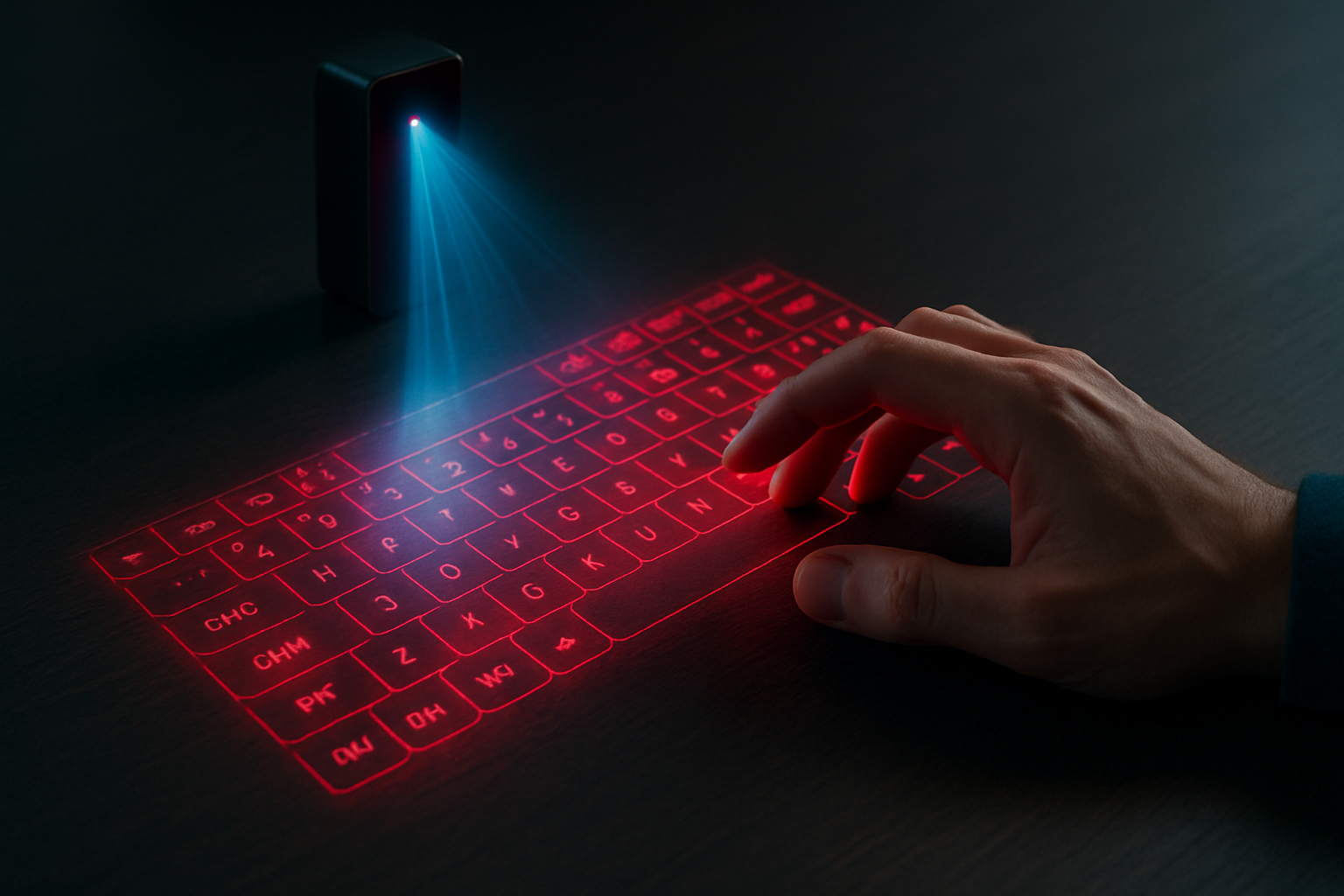Holographic Keyboards: Typing in Thin Air
In a world where technology continues to push the boundaries of what's possible, holographic keyboards are emerging as a futuristic solution to our typing needs. These ethereal input devices promise to revolutionize how we interact with our devices, offering a glimpse into a future where physical keyboards may become obsolete. As we delve into this cutting-edge technology, we'll explore its potential to transform our digital experiences and the challenges it faces in becoming a mainstream reality.

The Science Behind the Magic
At its core, holographic keyboard technology relies on a combination of projection and sensor systems. A small projector creates the image of a keyboard on a flat surface, while infrared or laser sensors detect the position of the user’s fingers. When a user “presses” a key, the system interprets the finger’s position and registers the corresponding keystroke.
The projector used in holographic keyboards is typically a micro-laser projector, capable of producing a clear, bright image even in well-lit environments. These projectors are small enough to be integrated into smartphones or other portable devices, making the technology highly mobile.
A Brief History of Virtual Keyboards
The concept of virtual keyboards isn’t new. Early attempts at creating projection-based input devices date back to the early 2000s. However, these initial prototypes were bulky, inaccurate, and impractical for everyday use. It wasn’t until the mid-2010s that advancements in miniaturization and sensor technology made holographic keyboards a viable possibility.
In 2015, Celluon introduced the Epic, one of the first commercially available projection keyboards. While it garnered attention for its futuristic appeal, it struggled with accuracy and user adoption. Since then, several companies have entered the market, each iterating on the technology to improve performance and user experience.
Current State of the Technology
Today’s holographic keyboards have come a long way from their predecessors. Modern systems boast improved accuracy, faster response times, and even haptic feedback to simulate the feeling of pressing physical keys. Companies like Samsung and Apple have filed patents for holographic keyboard technology, suggesting that major players are taking the concept seriously.
One of the most promising developments in this field is the integration of AI and machine learning algorithms. These systems can learn and adapt to a user’s typing patterns, improving accuracy over time and even predicting commonly used words or phrases.
Potential Applications and Market Impact
The potential applications for holographic keyboards extend far beyond simple text input. In healthcare, they could provide a sterile input method for doctors and nurses in clinical settings. For virtual and augmented reality experiences, they offer a way to interact with digital content without breaking immersion.
In terms of market impact, the global virtual keyboard market is expected to reach $3.5 billion by 2028, according to recent industry reports. While holographic keyboards are just one segment of this market, they represent a significant growth opportunity. Prices for current consumer-grade holographic keyboard devices range from $100 to $300, but as the technology improves and production scales up, these costs are likely to decrease.
Challenges and Limitations
Despite their potential, holographic keyboards face several challenges. One of the most significant is the lack of tactile feedback. While some systems attempt to simulate the feeling of pressing keys through haptic vibrations, it’s not the same as typing on a physical keyboard. This can lead to slower typing speeds and increased error rates, especially for touch typists.
Another challenge is the need for a flat, uniform surface. Uneven or textured surfaces can distort the projected image and interfere with finger tracking. Environmental factors like ambient light can also affect the visibility of the projected keyboard.
The Future of Typing
As holographic keyboard technology continues to evolve, we can expect to see more sophisticated and user-friendly implementations. Integration with smartphones and wearable devices could make virtual keyboards ubiquitous, always available when needed. Advancements in projection technology might even allow for customizable keyboard layouts or the ability to project onto any surface, regardless of texture or color.
The ultimate goal for many researchers in this field is to create a seamless, intuitive typing experience that rivals or surpasses physical keyboards. This could involve combining holographic projection with other technologies like eye-tracking or neural interfaces to create a more natural and efficient input method.
As we stand on the brink of this typing revolution, it’s clear that holographic keyboards have the potential to change how we interact with our devices. While challenges remain, the promise of a keyboardless future is tantalizingly close. Whether we’ll all be typing in thin air in the near future remains to be seen, but one thing is certain: the way we input information into our devices is evolving, and holographic keyboards are at the forefront of this transformation.





